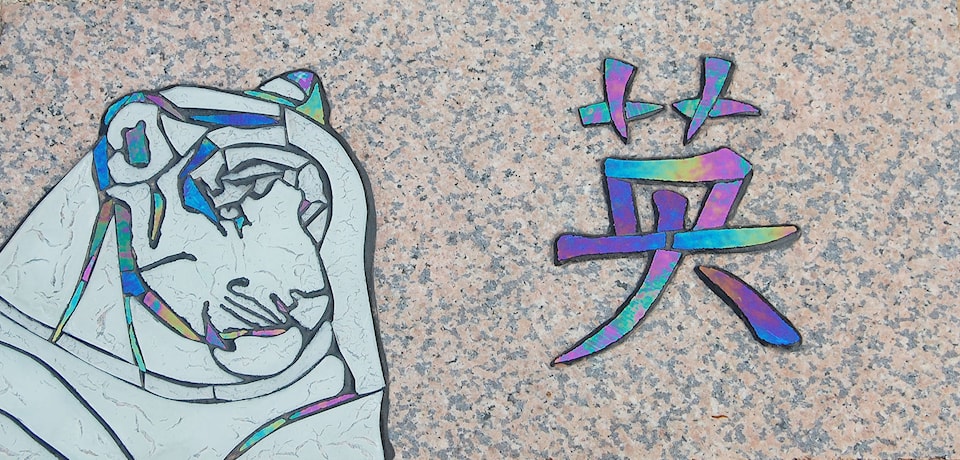Over the last 15 years the historic Chinese cemetery in Ashcroft has been transformed from a derelict and neglected space to one of beauty and peace, thanks to efforts of the Ashcroft and District Lions Club, the Rotary Club of Ashcroft and Cache Creek, and countless volunteers. Last year the graves were marked out with wooden frames and bentonite and two glass mosaics were added, and this year a new altar was unveiled.
Recent visitors will also have noticed that new headstones have been created and put in place for some 20 graves. The project was undertaken by Patricia Denis, who saw that most of the original headstones had disappeared over the years, and that many of the remaining ones were in poor shape.
“I felt sad that there was nothing to commemorate the people there,” she says. “I thought there should be something to let them know we had good intentions, and that all we were doing was being done with love.”
Her husband Paché had taken up glasswork, and he and Patricia received instruction in sandblasting from glass artist Marina Papais. Together the trio created five headstones, with Patricia and Paché doing the carving before the headstones were sandblasted.
Patricia—who had previously worked with Papais and Andrea Walker on the dragon mosaic at the cemetery, and with Papais on the koi mosaic on the cemetery’s bench—says that most of the headstones were done using a different technique involving glass and grouting. “I spent more than 300 hours over the winter working on them. It was a new process for me, but it was a lovely learning experience.”
She notes that no two headstones are alike. Some feature symbols which represent such things as peace, strength, benevolence, harmony, and eternity, while others feature natural elements, such as bamboo, dragons, and cranes, which have significance for the Chinese.
“Chinese people believe that when you die, cranes take you to heaven,” says Patricia. “Bamboo indicates strength, and dragons bring luck. Lily Chow [of the New Pathways to Gold Society] pointed me in the right direction and sent some symbols, and I did a lot of research.”
The original plan was to use cement blocks for the headstones, but Patricia says that Art Knapp’s in Kamloops gave them a great deal on granite blocks when they heard what they were going to be used for. “The granite pieces come from China, and when we explained what they were for the staff were very helpful.”
Patricia adds that the bentonite for the graves was donated by the late John Dormer, the former Kamloops councillor who passed away earlier this spring. “Mo Girard [of the Lions Club] was a friend of Dormer’s, and when he told John about the project he donated the bentonite. And all the frames for the graves were built by Paché. Rotary and the Lions had four or five work bees in a row to install the frames and bentonite.
“It was a labour of love for a lot of people. They worked their hearts out.”
She says that the next project for the cemetery will see a storyboard go up on the reverse of the dragon mosaic, which is currently blank. “It will tell the story of the restoration of the cemetery, and also have a key to the symbols on the headstones so people can understand what they mean.”
There are approximately 50 graves at the site, and Patricia intends to continue working on more headstones over the winter. “It’s a lovely project for the winter.
“More and more people are going to the cemetery, and it makes us feel good. It really began with the dragon mosaic. When that went up the cemetery really came to life. I really hope that the good intentions we’ve had in doing everything will bring peace, and that people will find this a special place.”
